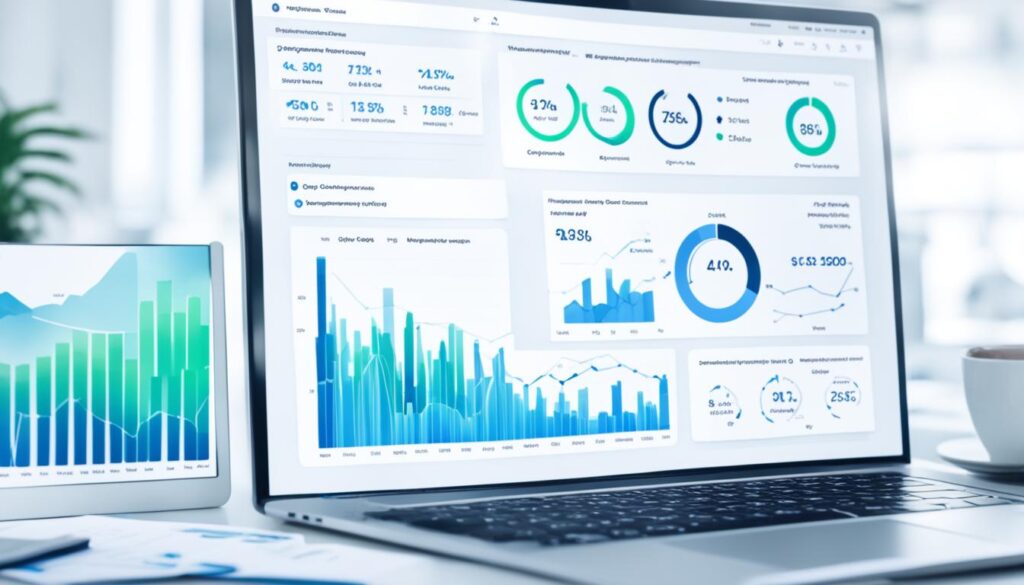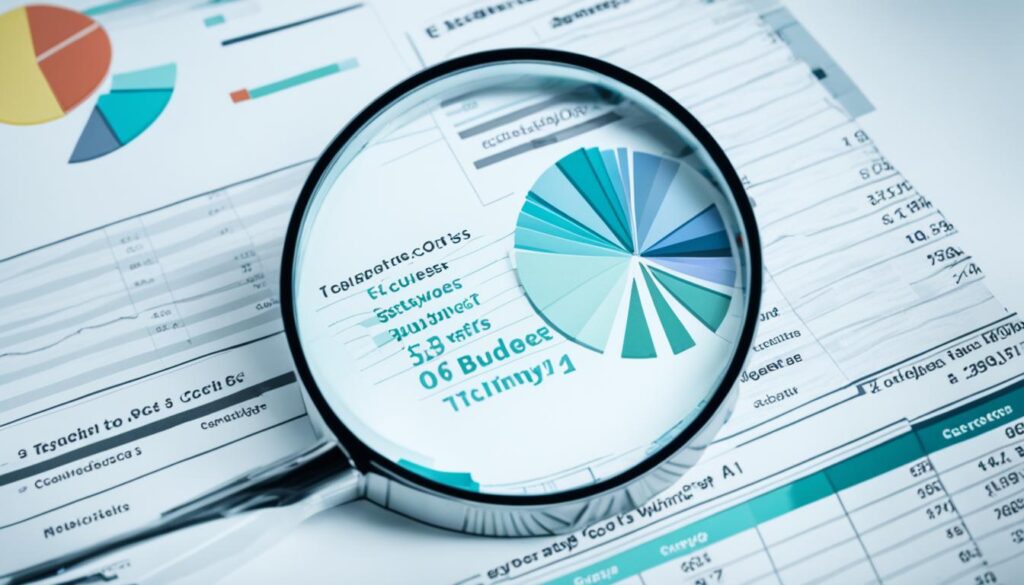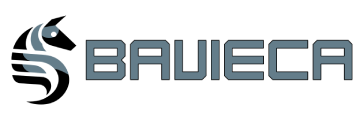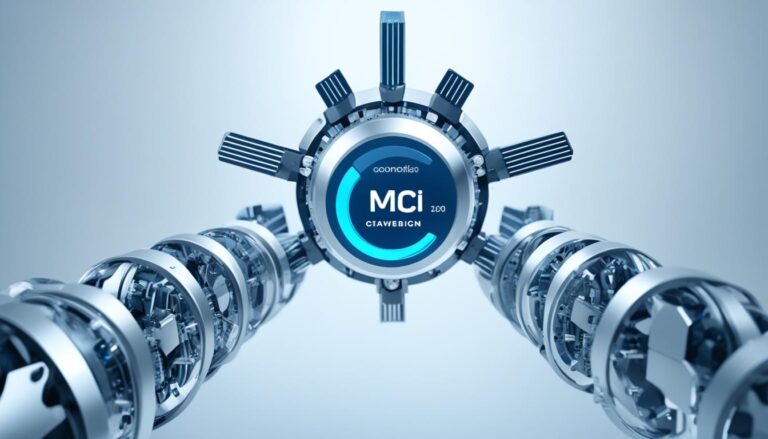“In God we trust. All others must bring data.” — W. Edwards Deming
For small and medium enterprises, AI advertising is a game changer. It’s not just about joining the game. It evens the odds with big companies. By using AI in PPC, SMEs can target prospects accurately and use their ad budget wisely.
AI saves ad writers a lot of time, cutting it by 30-50%. This efficiency is a big win. PPC campaigns optimized with AI bring better returns, transforming SMEs’ digital marketing. AI-driven PPC lets creatives focus more on being creative, researching, and planning strategies. AI tools help reduce errors and ensure ad targets align well. This makes sure the brand’s voice and style stay consistent.
AI in advertising lets SMEs understand data and customer habits better. With tools like Albert.ai, teams can launch campaigns faster. This gives SMEs a chance to improve their messages and connect better with people.
Key Takeaways
- AI can save up to 50% of the time required for ad copy creation.
- Enhanced accuracy in targeting reduces typos and mismatches.
- Tools like Albert.ai streamline campaign rollouts, saving valuable time.
- AI allows teams to focus more on creativity, research, and strategic planning.
- AI ensures content consistency by defining brand voice and style parameters.
The Importance of PPC for SMEs
Pay-per-click (PPC) advertising is vital for small and medium-sized companies to compete with big ones. SMEs can use PPC to target their ads and get precise results quickly. Let’s look at how PPC helps these smaller businesses.
Competing with Larger Companies
One major benefit of PPC is that it lets smaller companies take on bigger ones. It helps them reach people looking for what they offer. The money spent on PPC ads will top $190 billion by 2024, showing how important it is to stand out.
SMEs can use PPC tools to show their ads to the right folks. This makes sure they get the most from their marketing money.
Measurable Results
Another big plus of PPC is seeing how your ads perform in real-time. You can see how much you spend and how much you make back. This helps companies tweak their ads on the go.
Using AI in PPC can push click rates up by 15%. This info comes from the Digital Marketing Institute. It shows how critical data is for getting the best from your ad budget.
Cost-Effectiveness
PPC also offers a good deal for the money, especially for smaller businesses. By 2024, they will put about 45% of their marketing money into PPC, up from 37% in 2023. This shows they’re focusing more on PPC to use their budgets wisely. Keywords play a big part in making the most of their ads.
With costs per click going up, it’s key for SMEs to use PPC tools to keep spending in check and still attract clicks. Automated bidding on platforms like Google Ads and LinkedIn Ads helps improve results. SMEs can quickly see the impact of their ads and keep improving their strategies for better outcomes.
| Year | SMEs Marketing Budget Allocation to PPC | Global PPC Spending | Average CPC Increase |
|---|---|---|---|
| 2023 | 37% | $169.6 billion | n/a |
| 2024 | 45% | $190 billion | 7% |
Introducing AI-Enhanced PPC Advertising
Artificial intelligence (AI) is changing pay-per-click (PPC) advertising in big ways. It’s especially useful for small and medium businesses. Thanks to machine learning and AI-driven services, these businesses can now target and reach their audience better. This revolution makes understanding customer habits easier, leading to more effective ads.

Understanding Customer Behavior
AI tools analyze large amounts of data to predict which keywords will work best. This improves ad performance and gives deep insights into what audiences want. By learning from user behavior, AI tailors ads to each person. This makes people more likely to interact with the ads.
Precision Targeting
AI excels at precision targeting. It uses algorithms to spread budgets smartly across different ads and channels. This strategy helps get the best return on investment by focusing on the most promising areas. Predictive analytics play a key role too, forecasting how campaigns might perform, spotting trends, and avoiding risks.
AI also gets really specific about who sees your ads. It looks at behavior and likes to create targeted segments. This leads to ads that people are more likely to notice and act on. Features like clickable buttons, polls, and quizzes in video ads make them even more engaging. Google Ads moving to Responsive Search Ads shows how powerful AI can be in advertising.
How AI Transforms PPC Campaigns
Artificial intelligence (AI) has changed the game in pay-per-click (PPC) ads by automating management. This means ads become more efficient and can quickly react to market changes. AI’s smart tools adjust bids in real-time and make sure ads reach the right people. This leads to more people engaging with the ads and more conversions.

AI’s big plus in PPC is its knack for analyzing past data to spot trends and make smart decisions. It’s always looking at the data, working to place ads better while lowering costs. By doing this, ads hit the right audience, boosting the return on investment (ROI).
AI also brings creativity to advertising. It digs into campaign data and what consumers want to create ads that catch more attention. These ads are personalised, making them more engaging and meeting customer needs more closely. So, ads are not just seen but also resonate more with viewers.
AI keeps SMEs sharp in the ever-changing digital scene through ongoing analysis, creation, and testing of ads. It makes sure ads are seen at the best times and aren’t annoying to customers. This approach means ads are timely, relevant, and welcome.
| Benefit | Impact |
|---|---|
| Increased Click-Through Rates | Up to 50% increase |
| Improved Conversion Rates | 30% enhancement |
| Boosted ROI | 40% growth |
| Reduced Cost per Click | 30% reduction |
To wrap it up, adding AI into PPC management not only makes the process smoother but also gets ads in front of the right eyes more effectively. This technological edge means better click-through rates, higher conversion rates, and more ROI. SMEs using AI stay ahead in tight competition, making their online marketing stronger and more targeted.
Setting a PPC Budget with AI
Using AI for PPC budgeting is changing the game for small and medium businesses. AI uses advanced learning to make budgeting smarter and more efficient. SMEs can now get more out of every dollar in their PPC campaigns.
Optimizing Spend
AI improves PPC spending by changing bids based on how likely people are to engage. It uses predictions to spot trends and get the best results. This helps businesses reach the right people at the right time.
Thanks to AI, automating PPC tasks saves marketers time. Now, they can spend more time on strategy and creative work.
Maximizing ROI
AI boosts ROI in PPC budgets. It tweaks campaigns in real-time for better bids, ad spots, and targeting. AI looks at user behavior to make ads more relevant, boosting chances of success.
AI also tailors ad text to match user preferences, improving ad engagement. This leads to better click-through rates and ad scores.

| AI Features | Impact on PPC Budget | Result |
|---|---|---|
| Real-time Bid Adjustments | Precise Spend Allocation | Optimal ROI |
| Predictive Analytics | Forecasting Trends | Enhanced Campaign Effectiveness |
| Audience Segmentation | Personalized Targeting | Increased Conversions |
| Ad Copy Variations | Relevance of Ads | Improved Click-through Rates |
The Role of Dynamic Bidding
Dynamic bidding changes the game for modern PPC bid management. It uses smart algorithms to adjust bids in real-time. This helps small and medium-sized enterprises (SMEs) save money and target better.
It analyzes tons of data and changes bids to react to the market. This intelligent system predicts market trends. This leads to smarter decisions for campaigns.
This type of bidding saves time, is very precise, and boosts campaign results. The automation focuses on the right audience, increasing engagement. SMEs enjoy higher returns and can face tough competition online with this approach.
Dynamic bidding significantly advances PPC bid management. Automated strategies like Target CPA and Target ROAS help with setting bids. This approach improves PPC management and uses advertising money wisely.
Ad Performance Analysis with AI
Using AI in ad analysis gives small businesses powerful tools. They refine their PPC strategies with AI-driven ad insights. This helps them see what works and what doesn’t. They can find trends and improve.
Refining Strategies
AI in ad analysis is great at looking through lots of data. It finds patterns and how audiences behave. This leads to better strategies.
With AI-driven ad insights, ads can change in real-time. This depends on how users interact, and their info. Ads become more relevant to viewers, making campaigns work better.
Higher Conversion Rates
AI helps ads get more conversions. It tries different ad setups to find the best ones. Forrester says AI can increase conversions by 30%. eMarketer says it can boost clicks by up to 50%.
These AI-driven ad insights make processes smoother. They help spend ad money wisely. With AI, businesses get a better return on ad spend (ROAS). They use advanced analytics and make changes in real-time.
“AI’s ability to adapt and learn from past campaigns provides a robust framework for future ad optimization, minimizing risk while maximizing returns.”
Understanding Cost-Per-Click (CPC)
Cost-per-click (CPC) is a vital measure in digital marketing. It’s especially important for small and medium-sized businesses (SMEs). Starting in the late 1990s, it has a key role in evaluating ad success.
To calculate CPC, divide the ad campaign’s total cost by the number of clicks. This metric shows how well an ad budget is spent. For SMEs, a lower CPC means spending money more wisely and getting better returns.
Impact on Small Business Budgets
CPC greatly affects small business budgets. Google Ads and Amazon Advertising are examples of platforms offering CPC options. However, costs can change based on the competition for keywords or ad spots. Normally, a website might charge, say, $0.10 per click. But this rate can greatly vary across different platforms and industries.
In online ads, companies often pay based on CPC. This includes Search Engine Advertising, Display Advertising, and Social Media Advertising. Knowing and improving CPC is vital for small businesses. It helps them spend their ad budget more effectively.
Bid Management
Managing PPC bids well is key to controlling and bettering ad expenses. AI-powered PPC bid management helps SMEs manage PPC costs well. This ensures smart budget use. Businesses look at click-through rates (CTR) and Quality Scores to fine-tune their strategies. This can lower the CPC.
Using long-tail keywords with fewer searches each month can also cut down CPC. Adding negative keywords helps by leaving out unrelated terms. Moreover, targeting ads for specific times and locations can further optimize spending. This focused approach is both strategic and cost-effective.
By thoroughly analyzing CPC and managing bids wisely, SMEs can see better returns on ad spending. This makes sure their marketing efforts are successful.
Measuring Return on Ad Spend (ROAS)
For small and medium-sized businesses, knowing how effective a PPC campaign is remains key. The concept of Return on Ad Spend (ROAS) helps here. It gives a clear view of how much revenue is made compared to the ad budget. This helps businesses know how well their digital ads are doing financially.
Simply, you calculate ROAS by dividing the ad campaign’s revenue by its total cost. For example, a ROAS of 4:1 means every dollar spent on ads brings in four dollars. A higher ROAS means the campaign is more effective and profitable.
ROAS is great because it shows when ad spending meets revenue. This break-even point is important to see if ad spending can keep going or needs work to get better. ROAS, when compared with Return on Investment (ROI), gives a fuller picture of how investments are doing.
To really understand PPC ROI, it’s key to also look at Customer Acquisition Cost (CAC) and Lifetime Value (LTV). CAC shows the cost to get new customers. LTV tells us how much a customer will bring in over their time with us. Looking at ROAS with these metrics helps businesses understand how cost-effective their ads are.
With ad spending hitting over $125 billion in 2018, setting the right ROAS targets is more important. Businesses often aim for a 4:1 ratio, but this can change. It depends on things like the industry, how much clicks cost, profit margins, and campaign goals. Different growth stages may need different ROAS goals to keep making money and succeeding.
The table below compares typical ROAS goals for various growth stages:
| Stage of Growth | ROAS Target |
|---|---|
| Break-even | 1x |
| Sustaining | 2x |
| Growth | 5x |
To hit these targets, it’s wise to keep an eye on ROAS during a campaign. This means watching conversions and sales, testing where ads go, and making ad content better. In the end, knowing ROAS well, along with a solid PPC ROI analysis, helps us make smart marketing choices that bring in real results.
Target Audience Identification Through AI
Using AI for targeted PPC campaigns ensures we connect with the right people. It analyzes user data to find patterns we might miss. This way, ads reach those most likely to be interested, improving ad effectiveness and ROI.
Personalized ads win big, with 90% of consumers liking them better. This makes them more likely to buy. AI boosts these ads, raising clicks by 50% and sales by 30%, and making our investments 40% more profitable.
AI also makes PPC campaigns cheaper and more efficient. It uses data to make smart decisions, focusing ads on certain groups. This not only increases people clicking on ads but also boosts sales, giving smaller businesses an edge in the market.



